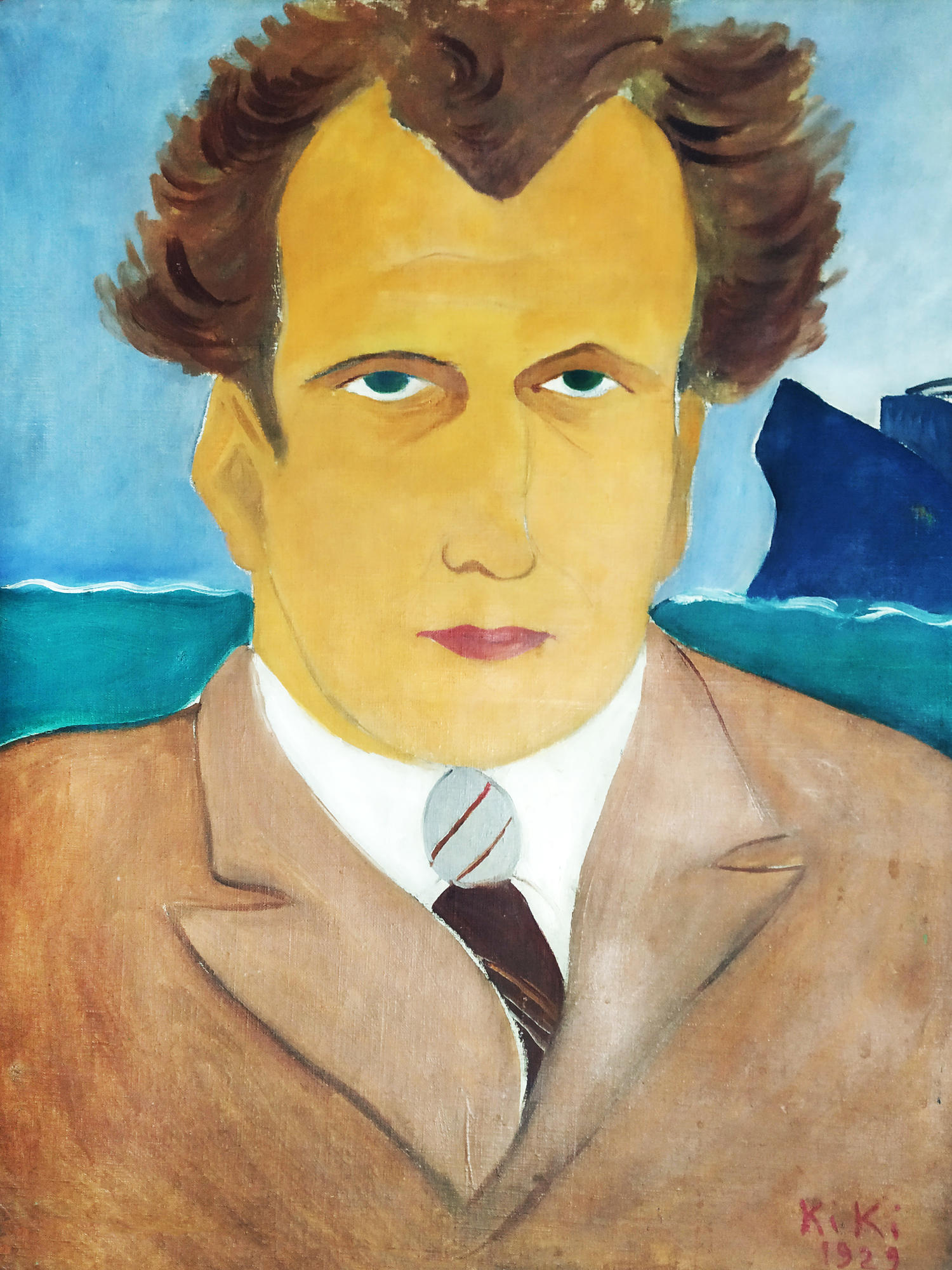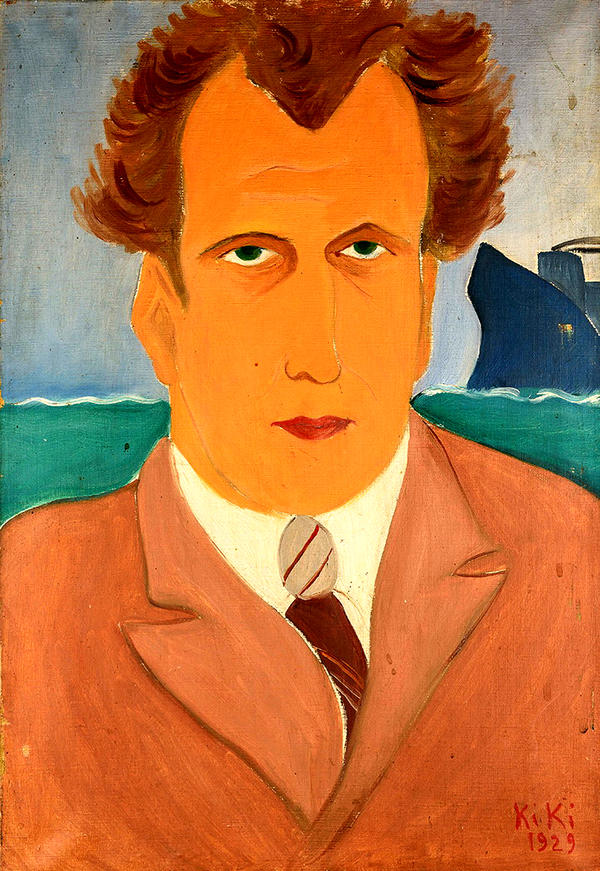This picturesque portrait of Sergei Eisenstein was painted by AlIce ErnestIne Prin /’pren/ (1901–1953), known in the history of art as KikI de MontparnAsse. She wasn’t just a model for the artists that flocked to Paris in 1920's from all around the world. She was the muse of Montparnasse, the “artistic capital” and a major center of the creative world at the time. There her friends, including AmedEo Modigliani /modi’ljani/, taught her how to paint. Here is what she had to say: ‘I have found my natural environment! The artists have adopted me. My sorrows are gone! ’. Ernest Hemingway, in the foreword to her memoir, which Kiki wrote at the age of 28, argued that ‘she was more prominent in the era of Montparnasse than Queen Victoria was in the Victorian era.’
Kiki herself was multilaterally gifted: she sang and danced beautifully, was the hostess of a cabaret, starred in the films of the French Avant-garde — ‘Intermission’ by Rene Clair, ‘Mechanical Ballet’ by Fernand Leger, ‘Inhuman’ by Marcel L’Herbier. More than a hundred photographs of her were taken by American avant-garde artist Man Ray. She also learned painting from the artists she modelled for. Eisenstein posed for Kiki at the end of 1929 in Paris, where he stayed for a while on the long journey to Hollywood with his cameraman Edouard TissEt /ti’sse/ and his assistant GrigOry AlexAndrov. Eisenstein was introduced to Kiki by the artist Fernand Léger, the poet Robert Desnos and the ethnographer Georges-Henri Riviere. Parisian friends invited Eisenstein to the famous pub in Montmartre — ‘Bull on the Roof’. Later, the director recalled: ‘In its basement I met the one and only Kiki — a model to all major Montparnasse artists. Kiki, who was belly dancing on a piano lid in Spanish shawls while Georges-Henri Riviere of the Musee du Trocadero played that same piano. Kiki, who gifted me a copy of her memoirs with the following inscription: “Car moi aussi j”aime les gros bateaux et les matelots” (“Because I also like big boats and sailors”). And then, finally, Kiki, who now herself started painting; painting my portrait. Right at the end of our second session, Grisha [Grigoriy Aleksandrov] walks in. She squints her huge almond-shaped eyes of the invariably supportive mare from under her long eyelashes towards Aleksandrov and… the lips of the future director of “Merry Fellows” are painted on my portrait.’
When German forces occupied Paris in 1940, Kiki moved far into the country, to a remote village where she would not have to contact with the nazis. She returned to the city only when the city was liberated. Eisenstein’s portrait is the only work of Kiki in Russia.
Kiki herself was multilaterally gifted: she sang and danced beautifully, was the hostess of a cabaret, starred in the films of the French Avant-garde — ‘Intermission’ by Rene Clair, ‘Mechanical Ballet’ by Fernand Leger, ‘Inhuman’ by Marcel L’Herbier. More than a hundred photographs of her were taken by American avant-garde artist Man Ray. She also learned painting from the artists she modelled for. Eisenstein posed for Kiki at the end of 1929 in Paris, where he stayed for a while on the long journey to Hollywood with his cameraman Edouard TissEt /ti’sse/ and his assistant GrigOry AlexAndrov. Eisenstein was introduced to Kiki by the artist Fernand Léger, the poet Robert Desnos and the ethnographer Georges-Henri Riviere. Parisian friends invited Eisenstein to the famous pub in Montmartre — ‘Bull on the Roof’. Later, the director recalled: ‘In its basement I met the one and only Kiki — a model to all major Montparnasse artists. Kiki, who was belly dancing on a piano lid in Spanish shawls while Georges-Henri Riviere of the Musee du Trocadero played that same piano. Kiki, who gifted me a copy of her memoirs with the following inscription: “Car moi aussi j”aime les gros bateaux et les matelots” (“Because I also like big boats and sailors”). And then, finally, Kiki, who now herself started painting; painting my portrait. Right at the end of our second session, Grisha [Grigoriy Aleksandrov] walks in. She squints her huge almond-shaped eyes of the invariably supportive mare from under her long eyelashes towards Aleksandrov and… the lips of the future director of “Merry Fellows” are painted on my portrait.’
When German forces occupied Paris in 1940, Kiki moved far into the country, to a remote village where she would not have to contact with the nazis. She returned to the city only when the city was liberated. Eisenstein’s portrait is the only work of Kiki in Russia.



